Biomimicry Provides a Ray of Hope for the World’s Problems


Biomimicry, the design and production of materials, structures and systems modeled on biological entities and processes, is one example of how Mother Nature knows best. Breakthroughs in this field are touted as being one way to achieve a circular economy and solve other environmental challenges. That’s why the Biomimicry Institute and the Ray C. Anderson Foundation launched the Biomimicry Global Challenge and created the $100,000 Ray of Hope Prize in 2014. This partnership’s goal is to help bring nature-inspired technologies to market.
Doing a world of good with biomimicry
According to Beth Rattner, Executive Director of the Biomimicry Institute, nature has the answers to solve many of the world’s problems. Businesses embracing nature’s designs can do a lot of good as evident with the Ray of Hope finalists, who spend a year working with experts and mentors through the Institute’s Biomimicry Launchpad. The 2019 finalists were:
Aruga Technologies (Pittsburgh, PA) has developed a vascular implant technology with double the implant life that takes advantage of nature’s dynamic surface wrinkling found in dolphins (prevents fouling from barnacles and algae) and other creatures. In the case of human arteries, as the surface wrinkles and straightens, debris (such as platelets) is cast off, renewing the surface.
Other potential applications include water filtration and petrochemical processing, replacing conventional chemical coatings and expensive cleaning processes used in these applications. Aruga received a $25,000 second prize from an anonymous donor.
Another treatment technology is being developed in India, where the majority of sewage goes untreated. The EcoStp team from Bangalore has come up with a low-maintenance technology inspired by the four chambers of a cow’s stomach. Instead of using high-energy equipment like motors, fans, pumps and blowers found at a conventional treatment facility, bacteria, plants, and gravel filters are used to treat sewage. Better yet, the technology produces energy instead of consuming it and has the potential to treat up to one million liters of sewage a day without needing to be connected to a power grid.
Two teams from California State University-Long Beach were also finalists:
- Gen-Rail adapted features of three diverse creatures (cockroach, California condor and desert snail shell) to harness wind generated on urban freeways and convert it into energy. Gen-Rail claims its system has a small environmental footprint, is highly efficient and will be easy to implement in cities.
- Phalanx Insulation looked to the cactus, cathedral termite and several Saharan creatures (silver ant, camel) for designing its insulation grid, which is applied to exterior walls of existing buildings. This system reduces interior temperatures of buildings passively without the need for electricity by removing hot air and moisture.
Finding more solutions with flora
Several finalists took their inspiration from plants for their technologies. Habari (Utrech University, The Netherlands) is addressing the billions of dollars in potential frost damage to tea plants in Kenya with technology adapted from several of that country’s native mountain plants. Triggered by temperature, the system automatically deploys a mesh where frost deposits, covering the plants and preventing the frost from settling on the leaves.
The inspiration of a carnivorous plant is helping to do good in a different way. Every year, more than 600,000 people die from malaria. To reduce this number, Cornell University designed its device based on the bladderwort plant, which uses vacuous pods on its roots to trap small insect prey. The UPod is a solar-powered mobile device that pulls water and mosquito larvae into a tightly-sealed water chamber, where the larvae are destroyed.
Grand prize winner looks to the sea
A fifth of clean water produced globally is lost to leaks every day. WatchTower Robotics Co. (Boston, MA), the recipient of the $100,000 prize, incorporated features of three marine creatures in their patented robotic technology to address this loss:
- Blind cave fish. The animal senses changes in water pressure using hair cells to ‘see’ the surroundings. The silicon flappers of the robot mimic this process.
- Moon jellyfish (shown above). A pulsating umbrella-shaped bell propels the animal through the water. The robot also uses umbrellas at two locations to move the robot through the pipes without using any energy.
- Octopus. Because of its soft invertebrate body, an octopus can squeeze through tiny cracks and holes. The robot is also soft without joints, allowing it to bend and shrink to 50 percent of its original size, Octopus-like suckers on its flappers also help the robot maintain contact with the pipe wall and identify leaks.
The robotic system maps pipe systems in three dimensions and WatchTower claims it has five times the speed of traditional leak detection at a tenth of the cost.
So what unique animal or plant will lead to another innovative design? Stay tuned to see what next year’s finalists come up with and who will take the grand prize.
Image credit: William Warby/Flickr
'Do Good' Investing: A Gimmick or a New Asset Class?


“Do Good” investing is a broad field with many names, from impact investing, socially responsible investing and ESG investing (environmental, social and governance). While each of these features slightly varied approaches, they all incorporate the common goal of enacting positive change in an area in which the underlying investor is passionate. And with a reported three-quarters of Americans having moderate to high interest in sustainable investing, this field should be subject to critical evaluation commensurate with other asset classes. A rigorous objective analysis will indicate whether collectively this form of investing represents a legitimate new asset class, or just a gimmick to raise assets.
It’s logical this new investment category would begin to gain prominence in the present era. As the millennial cohort grows into financial maturity, the generation known for desiring meaning in their everyday work understandably wants the same in their portfolios. Part of an overall shift towards sustainability and consciousness of our effect on the world, the morality of supporting industries through deliberate investment appears to many as a great opportunity to unite their morals and their money.
Despite widespread agreement on the underlying motivations of Do Good investing, there is no shortage of criticisms about its current state and future prospects. These valid concerns often center around the all-too-common deficiency in reliable data to evaluate important initiatives and components of the investment process. This past November, Erika Fry of Fortune put together a worrying collection of quotes from a conference of women investors at the forefront of the burgeoning sustainability movement. Their voices tell a troubling story: that there is much uncertainty that must be overcome before Do Good investing can become a mainstream investment category.
Evaluating “Do Good” Investing
In traditional investment management, the acumen of a manager is determined by how they do on a risk/reward basis. These success metrics -- which are easily calculated and accepted widely -- enable those managers who perform well to attract additional assets, and vice versa when one does not meet performance expectations. Similarly, these performance metrics factor into how much a manager charges. Ultimately it is about how much, after fees, that an investor keeps.
Within the category of Do Good investing, there is an entirely new, often subjective component, to factor into the evaluation process. How is the “Do Good” piece evaluated, and how is it measured against expectations and against peers? How should the cost/benefit analysis of the Do Good piece be incorporated into fees?
These are the kinds of thorny questions that must be addressed in a widely accepted transparent framework for this field to truly develop into a new and significant asset class. Simply trusting that the Do Good elements are efficiently and effectively employed can only go so far, especially as investors get more sophisticated and demanding.
For instance, ESG investing requires, by its very definition, a robust and sensible approach. No investment that purports to improve the world can be made without a full appreciation of historical context, the current environment, and potential effects. Failing to take such considerations into account would be a fundamental failure, and doing so is not simple or easy.
Also absent is a universally understandable benchmark -- are investors better off using a barbell approach, where they focus on generating the best returns possible and then enter into an independent unrelated transaction that allocates a percentage of those excess returns directly to organizations focused on the charitable aspect? How do you evaluate quantitatively one's impact on improving areas like the climate? How do you value one's approach in an area like education to that of someone else? These are difficult, maybe even unanswerable questions that may limit widespread adoption of socially responsible investing.
Seeking to prove their worth
Despite this issue of intangibility, ESG funds are more prevalent now than ever. In just the first quarter of 2019, 73 funds adopted ESG criteria -- a significant leap compared to the total of 51 funds in 2018. In addition, 23 of the newest ESG funds contain more than $1 billion in assets. Global investment manager Nuveen revealed that 52 percent of investors would be likely to put all their investment holdings into responsible investing, and an overwhelming 92 percent of millennials felt the same way.
In early 2018, S&P Global Ratings formed a sustainable finance team in order to analyze ESG criteria of companies and countries, hoping to determine the value of such investments and address the stigma surrounding their performance. Swiss bank UBS also sought the answer to this question examining ESG investing back to the 1970s. They found that 90 percent of the time there was no negative performance by ESG investing versus the traditional approach, and that they were incredibly stable in their gains in the long-term relative to applicable equity benchmarks.
But that’s just it -- in a world where funds and companies are constantly pressured to meet benchmarks, often as soon as every quarter, the long-term orientation of ESG investing runs counter to this mindset. How the investment strategy is actually implemented can vary significantly. In some cases it can be picking public companies that do or don’t do certain things. On the other side of the spectrum are private investments that focus on entities that have the dual objectives of profit and doing good but the profit is unquestionably compromised to perform the particular good. This variance shows that Do Good investment is fundamentally different from regular investing, and should be treated as such.
Perhaps it is time for a shift in how Do Good investing is evaluated, away from traditional standards and focused more on aspirational goals, metrics that specifically address how effective these funds and investments are in their actual ability to do good in the world.
All said, it’s quite possible the field of Do Good investing can be large without the need for formal “institutional metrics,” because there are plenty of investors with a lot of capital who believe that the intrinsic “feel good” nature of this investment type is more important than specific metrics. This is already proving to be a massive market: $502 billion has been put towards impact investing since 2007, and within the overarching trend of socially responsible investing, assets have risen to a staggering $30.7 trillion. Even as the field continues to grow, analysts and financial experts are still studying these investments to discover the intersection between profit and impact.
Do Good investing is definitely not a gimmick, but the field is not yet robust enough to be considered a bona fide asset class either. That said, as long as investors gravitate toward ESG and socially responsible investments, sponsors will offer a broad array of choices to capture a plethora of general and specific “do good” purposes.
Image credit: Nattanan Kanchanaprat/Pixabay
Terraton Initiative to Pay Farmers to Bank Carbon in the Soil


Start-up agtech company Indigo Agriculture has put the agriculture sector in the unusual position of climate savior with its recently announced Terraton Initiative: a global effort to remove one trillion metric tons of carbon dioxide from the atmosphere and use it to enrich agricultural soils.
Boston-based Indigo Ag, earning the top spot on CNBC’s 2019 Disruptor 50 List, is counting on farmers like Will Harris of White Oak Pastures in Georgia to unlock agriculture’s potential as part of the solution to climate change. The grass-fed cattle at Harris’ 3200-acre farm sequester more carbon than they produce, as TriplePundit reported last month.
The regenerative agriculture practices that Harris deploys helps to pull carbon from the air and store it in the soil as well as make the land more resilient to extreme weather events. Methods include no-till, cover cropping, crop diversity, integrating livestock and maintaining a living root year-round.
“The ability to sequester carbon in the soil is the only thing that can take place at the right scale to solve a one trillion-ton problem, and it’s executable today; it does not depend on moonshot technology, and it’s reasonably affordable. It just comes down to us; if as a society we make a decision, we can do this,” David Perry, Indigo CEO told AgFunder News.
The Terraton Initiative launches a carbon market for growers
The Terraton Initiative has a four-pronged strategy to reach its goal:
- Indigo Carbon, a carbon market providing incentives to growers to implement regenerative farming practices at scale.
- The Terraton Experiment, a large, real-time, open-source soil carbon study.
- The Terraton Challenge to encourage technological innovation.
- The Carbon Cup to inspire grower competition and innovation.
The Terraton Experiment, in which Indigo Ag will partner with the Soil Health Institute, The Rodale Institute, and a network of grower partners, is the world’s largest atmospheric carbon sequestration experiment, including tens of thousands of farms followed for a decade or more. Its aim is to quantify farming practices that maximize soil carbon sequestration and understand the impact of these practices on farm profitability and crop nutrition. The results of this experiment will form the blueprint for maximizing soil carbon sequestration. Indigo will make the data from this study available to other research institutions.
The new market, Indigo Carbon, will pay farmers — initially $15 to $20 per ton of carbon — to implement regenerative practices such as "no till" that reduce or remove carbon from the atmosphere.
Welcome economic incentives for farmers
That is welcome news for U.S. farmers, who are reeling from an unprecedented number of billion-dollar weather and climate disasters, face the highest amount of farm debt since 1980, and are receiving a smaller share of every dollar spent on food but paying more to produce it. According to the U.S. Department of Agriculture (USDA), farmers and ranchers get 7.8 cents out of every food dollar, one of the lowest numbers since the USDA began keeping track in 1993. The rest of the dollar — 92.2 cents — covers off-farm costs, including processing, wholesaling, distribution, marketing and retailing.
Erin Fitzgerald, CEO of the U.S. Farmers & Ranchers Alliance, an organization representing the interests of over 100 farmer and rancher-led organizations and agricultural partners, spoke at the company’s Beneficial Agriculture conference where the Terraton Initiative was announced.
“Farmers are the solution to providing ecosystem services and our ability to sequester carbon,” Fitzgerald says. “They are the change agents in this equation, and we must co-create solutions for the future with them. This requires all innovators to work with farmers and develop new business models that recognize the work of farmers.”
Making regenerative practices mainstream
The challenge will be to get more farmers to adopt the regenerative practices that the Terraton Initiative is banking on. To date, only a small percentage of farmers across the U.S. use the techniques.
But there are signs that this is changing. From an estimated 108 million acres of current adoption, Project Drawdown estimates regenerative agriculture could increase to a total of 1 billion acres by 2050, based in part on the historic growth rate of organic agriculture, as well as the projected conversion of conservation agriculture to regenerative agriculture over time.
According to the National Academies of Science, Engineering and Medicine (NASEM), the benefits of annual carbon drawdown in agriculture could start within as little as two to five years after adoption of technologies. The practically achievable technologies are well researched, increasingly marketed and have gained greater farmer acceptance, but according to NASEM more “shared risk and creative financing models are needed to further improve adoption rates.”
The Indigo Carbon market and other aspects of the Terraton Initiative are geared at persuading farmers that regenerative practices are a winning proposition for them.
“If the Terraton Initiative achieves its promise, we believe it will enrich agricultural soils with 1 trillion tons of atmospheric carbon dioxide,” Perry told industry journal Successful Farming. “It will improve the profitability of farmers. There will be healthier rural communities. It will also make farms more resilient to extreme weather by increasing water permeability of soils.”
Image credit: Pixabay
Rivian Gives Old EV Batteries a New Life in Puerto Rico
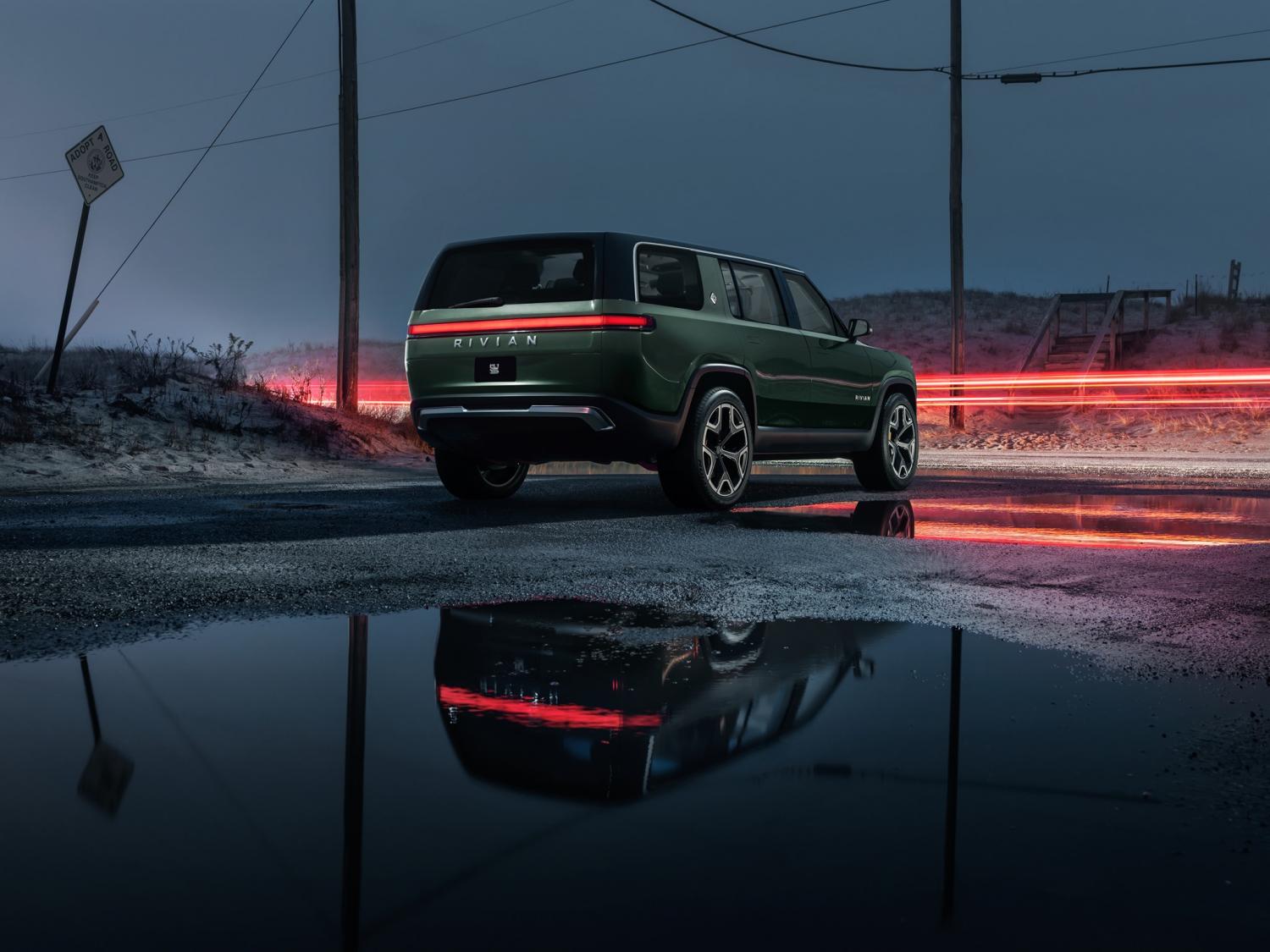

All eyes are on Rivian. The “Tesla of pickup trucks” has been making waves with its big, bad, bold and all-electric SUVs and light trucks over the past several months.
It wasn’t long ago when Tesla was dominating the conversation about electric vehicles (EVs). And why not? Fantastic design, great range and a CEO who knew how to play old-school media and, more importantly, social media. All the automakers found themselves playing catch-up—including Mazda, which recently announced it will launch its first all-electric care next year.
But a funny thing happened—or, should we say, countless funny things happened—along the way with Tesla. Elon Musk was getting on many last nerves in between spit-spats with the U.S. Securities and Exchange Commission or those involved with a rescue mission in Thailand. The company drew criticism over a fall in vehicle deliveries and its vehicle autopilot feature continues to face scrutiny. Again and again, just when it appears the company is on the rebound, more news comes that sends analysts into a tizzy. To be fair, being a first-mover in the industry puts Tesla under a microscope; but Musk’s antics present plenty of distractions, too.
In swoops Rivian, and to paraphrase our cleantech writer, Tina Casey: If Rivian succeeds with its fearless trucks and SUVs, it could be over for the internal combustion engine.
But beyond its design, and the fact that Rivian is taking the lead on an automotive segment that Tesla and other automakers have yet to develop, there’s another way in which this EV upstart is racing ahead of Tesla.

Last week, Rivian announced the launch of a project to install second-life batteries in a solar microgrid initiative in Puerto Rico. Located in the town of Adjuntas (shown above), this partnership with the Honnold Foundation is one of the first steps in the company’s plan to deploy these batteries to expand energy independence and clean power generation.
The company says it has devised its battery management system so that it can transition from vehicle energy storage to stationary power storage at the end of a Rivian model's life. According to Rivian, its battery modules’ thin design makes it possible to plan for second-life applications that are both space-efficient and customizable. For this project in Puerto Rico, these 135 kilowatt-hour batteries that once powered the company’s development vehicles will anchor this energy storage system.
“Second-life batteries are a big enabler to accelerating widespread adoption of renewable energy, and it’s exciting to envision this system contributing importantly to a community," said RJ Scaringe, Rivian’s CEO. "This project allows us to model a customized energy storage solution that takes into account space constraints, disaster resiliency and energy independence."
Like countless communities in Puerto Rico, Adjuntas suffered during and long after Hurricane Maria in 2017. Renewables, backed up with energy storage systems made possible by companies like Rivian, can help provide safe, secure and affordable energy while allowing towns and cities to plan for long-term resilience. For Adjuntas, this system can help power businesses in the town’s central square in the event its power grid goes down.
Many companies have slowly made the decision to focus on sustainability in a bid to improve their reputations. Rivian is turning this approach upside-down, establishing its purpose at the onset—a remarkable step for an automaker, or any company for that matter.
Image credits: Yurivict/Wiki Commons; Rivian/Facebook
Why Your Brand Should Try a Trust Fall

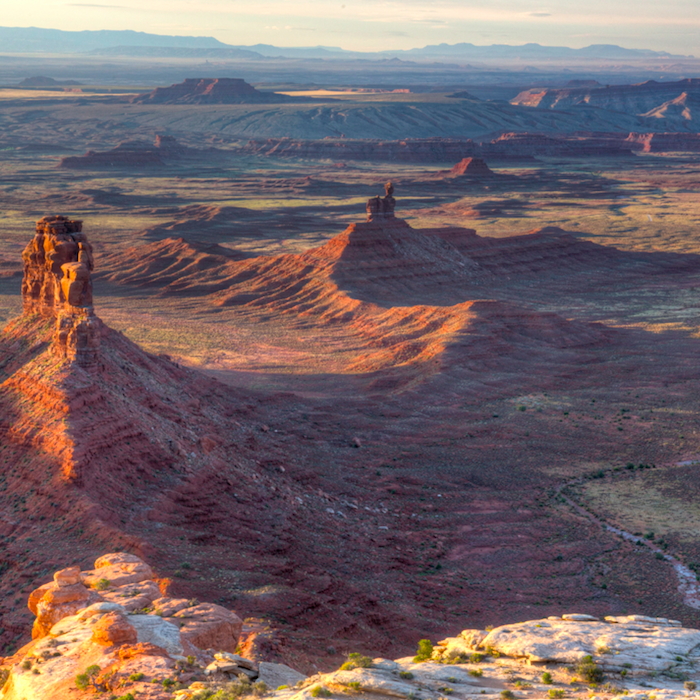
A Porter Novelli/Cone study suggests a brand's purpose will resonate far more with consumers than a product - so consider an attempt at a "trust fall."
If you sell pet food, you should care about animal welfare. If you sell cars, you should care about drivers and their families. If you sell anything, more than likely you are passionate about a correlating cause – and, passionate narratives can make all the difference when it comes to brand loyalty.
In the 2019 Porter Novelli/Cone Purpose Biometrics Study, 79 percent of the more than 1,000 U.S. adults who participated in this study felt—emotionally and physically—a deeper personal connection to companies with values similar to their own.
The study measured facial expressions, heart rate and skin conductance (the phenomenon that occurs when skin momentarily becomes a better conductor of electricity when stimuli occur that are physiologically arousing/exciting) upon viewing a randomized set of advertisements.
Why your brand should consider a 'trust fall'
Respondents were shown two ads from the same brand—a purpose-driven narrative and a product-focused narrative. Purpose advertisements outperformed product advertisements in all three biometric instances of attention, arousal and positive emotion. In fact, product advertisements dipped into the negative emotion categorized as annoyance.
Leading with purpose might bring about feelings of apprehension among some business decision makers. Concerns about alienating audience members are valid. What this study proves is that emotional appeals evoke powerful and positive responses from consumers. The business case for going out on a limb and showing the world which causes your organization supports is worth the risk because the rewards can be great. By engaging your organization in such a “trust fall” with consumers, the hope is that they will lift your brand up … and, so far, it’s working.
Why purpose narratives are important for brands
Authentic purpose narratives build deeper bonds. When a company leads with purpose, consumers agree they would:
-
89 percent – Have a more positive image of that company
-
86 percent – Be more likely to trust
-
83 percent – Be more loyal
Purpose helps brands stand out from the competition. When asked which advertisement was more unique, the overwhelming majority of responses confirmed that purpose leads. When asked which advertisement made them feel better, almost 90 percent of responses confirmed that purpose narratives win over product narratives.
People are looking to connect with and embrace brands that share their values. When deeper bonds are established, a snowball effect of recommendations occurs. People buy what is known, has been proven effective or comes highly recommended.
When a person feels a connection to a brand’s purpose, advocacy blossoms.
-
79 percent feel proud to sport the company’s logo
-
74 percent tell others to buy from them
-
62 percent share information about the company on their social networks
When more people are talking about your brand, publications and media outlets take notice. By sharing what drives your company’s culture, you will elicit biological responses from people passionate about the same issues. When that happens, meet your new brand advocates.
Brand advocates go to bat for brands they trust
Purpose inspires customers to defend you. One example is Patagonia’s The President Stole Your Land campaign. The hashtags #BearsEars (shown above) and #MonumentalMistake surged and went viral after Patagonia updated its homepage and sent out this tweet.with the simple yet striking black background with white text. This campaign was unfolding at the time Porter Novelli/Cone’s purpose study was developing. It was determined the majority of interactions were in favor of Patagonia and its mission. In addition, while the company has not disclosed exact figures, all signs point to Patagonia’s $1 billion revenue growing.
A lot of messages from a lot of companies are being sent every day. Examples like Patagonia only strengthen the notion that purpose, authenticity and strong messaging build loyal followers. One key takeaway from Porter Novelli/Cone’s Feeling Purpose webinar held this week was: Don’t be afraid to share your organization’s values – because your movement is theirs too.
So, be authentic and try a trust fall. There may be a lot of customers ready to support your organization’s values, and products.
Image credit: BLM/Flickr
Walking the Talk: How Businesses Can Help Build Strong Communities


Being a force for good in the world is more important than ever. The challenges our communities face are mounting quickly— including education, jobs, poverty, health, climate, public safety, and energy. But if we look again with a fresh perspective, behind these challenges lie opportunities for us to learn, adapt, and tackle these problems together.
Over the past few decades we have seen a monumental shift in employee activism and an increasing expectation for businesses to help create positive social change that helps address everything from the needs of neighborhood schools to large-scale global initiatives. In this new age of work, it is no longer sufficient for businesses to view their role solely through the performance of their bottom line – businesses that do well, will do good.
To truly bring about meaningful change it must be authentic to the business and its employees. The transformation facing corporate America is undeniable, but organizations can use their talent as a competitive advantage by providing a heightened sense of purpose through philanthropic efforts and volunteerism. For instance, America's Charities Snapshot Employee Research found that 71 percent of employees say it is very important to work for an organization whose culture is supportive of giving and volunteering.
And business leaders are acutely aware of this new reality. The Deloitte Global societal impact survey quantified the mindset of today’s corporate leadership and the lens they look at business through. The survey reveals that business leaders wholeheartedly believe companies are more than mere employers (93 percent); they’re also stewards of society. In fact, 95 percent of respondents said they plan to take bigger stances on societal-impact issues in 2019 and are devoting substantial resources to socially responsible initiatives.
At Deloitte, we are united in our commitment to make a positive impact on the world, wherever we can - it’s part of our DNA. The passion of our professionals gives Deloitte an opportunity to reach deep into local communities and act as a catalyst for change. Nearly two decades ago Deloitte introduced Impact Day, a way to celebrate our year-round commitment to making an impact that matters. To celebrate our 20th Impact Day on June 7, 2019, and to create lasting community impact, Deloitte hosted 20 philanthropic “surprises” in cities around the country.
On Impact Day I was fortunate enough to have the opportunity to volunteer at the Carroll Center for the Blind. Working alongside my Deloitte colleagues, we gardened, planted and weeded to help beautify the gardens on the organization’s sprawling campus. Established in 1936, the renowned Carroll Center for the Blind, located in Newton, Massachusetts, empowers those who are blind and visually impaired to learn the skills to be independent in their homes, in class settings, and in their work places, and ultimately to lead a fulfilling life. Every year, Impact Day serves as a reminder of the importance of looking beyond our four walls and taking the time to give back to the communities where we live.
Ultimately, our role as corporate citizens is about using experience and talent to do something extra, it’s about empowering professionals to participate and it’s about building more vibrant communities. Our professionals know that they can succeed at Deloitte by being a force for good in the world because it’s true to our purpose and who we are.
Image credit: Rita Vicari/Unsplash
Business Contributions to Inclusive Growth: Lessons from Israel


This article series is sponsored by Maala and produced by the TriplePundit editorial team.
The call for inclusive growth—and a new form of capitalism—is rising. So, what is inclusive growth, anyway, and why does it matter? As defined by the Organization for Economic Cooperation and Development (OECD), inclusive growth is economic growth that is distributed fairly across society and creates opportunities for all. Simply put, it is growth that benefits everyone.
Deloitte found in a recent survey that a majority of business leaders are supportive of changing their corporate practices to foster more inclusive growth. They believe this new model of capitalism can feed innovation, strengthen resilience and contribute to their competitiveness overall. Inclusive growth was also a key focus of the annual international conference held by Maala, Israel's corporate social responsibility (CSR) standards-setting organization—indicating that businesses in this corner of the world are increasingly ready to embrace the concept.
“Poverty and inequality are bad for business,” said David Grayson, emeritus professor of corporate responsibility at the Cranfield School of Management in the U.K. “A prosperous Main Street needs prosperous back streets.”
Inequality poses a systemic risk
Dismissing the imperative of inclusive growth can come with a high cost to business, Grayson said. “The harsh reality is that this affects the license to operate,” he told 3p. “There are substantial risks for businesses as a result of exclusion of certain parts of the population from the economy and society, in terms of social and political instability and the rise of populism and more extreme political views.”
Businesses are waking up to those risks and taking steps to address the challenge. The MasterCard Centre for Inclusive Growth, for example, seeks to advance sustainable and equitable growth and financial inclusion around the world. And Unilever supports the livelihoods of nearly 750,000 smallholder farmers who often lack access to markets, financial support and training.
Creating equal opportunities in Israel
Inequality issues come into stark focus in Israel, but Israeli businesses are working toward a change. While the country’s unemployment rate has hovered around 5 percent in recent years, many working-age Israelis remain excluded from the workforce or stuck in low-wage jobs, according to JDC-Tevet, the leading developer of multi-dimensional employment services in Israel, effectively serving as a national R&D arm.
Over 25 percent of working Israelis earn “extremely low” wages, compared to an average of 15 percent in other OECD member states, JDC-Tevet reports, and a disproportionate rate of these low-income workers are members of minority communities.
“This is a great challenge for Israel, where productivity is some 25 to 30 percent compared to the OECD average,” Einav Aharoni Yonas, CEO of JDC-Tevet, told TriplePundit. “We also know that there is a unanimous correlation between productivity and wages, meaning Israel's slow growth in productivity has led to slow growth in wages.”
If Israel is to sustain its economic and social vitality and viability—especially in light of increasing automation and other disruptions affecting the world of work—at-risk populations must be educated, trained, and assisted in finding and keeping jobs, Yonas said.
To that end, JDC-Tevet partners with the government of Israel, businesses and NGOs to develop and test new programs that address the needs of those excluded from the labor market, among them Arab-Israelis, ultra-Orthodox Jews, people with disabilities and Ethiopian immigrants, according to the organization. Once programs are successfully piloted, the government generally takes them over and applies them on a broader scale.
“If an employee remains stuck in an entry-level job, he'll remain on the verge of poverty,” Yonas explained. “It’s in the interest of both employer and employee to change that, so that businesses will see improvements in their productivity, while at-risk workers will benefit from improved wages and welfare.”
Two Israeli companies—food giant Strauss Group and financial institution Bank Leumi—offer case studies of inclusive growth in action. We spoke with decision-makers at these two organizations for a closer look.
Strauss Group drives equity in the workforce
For Strauss Group, a major food manufacturer in Israel with extensive global operations, inclusive growth is “a business philosophy and an opportunity,” said Osnat Golan, the company’s vice president of communications and sustainability. Strauss Group’s philosophy addresses inclusive growth at all levels of the business, including products, strategy and supplier engagement. "As an organization, we look ahead to the future, and we understand that in order to grow and succeed, it starts with our employees.”
For example, although its workforce is already diverse—43 percent of managerial positions are held by women—Strauss went a step further to improve equity among all employees, Golan said.
“We wanted to be more diverse, to include different populations and to improve the economic conditions of low-income employees,” she explained. “So our management took the decision to create what we call our Social Plan. Among our commitments was that no employee would earn the minimum wage; we would exceed that wage by about $100 a month.”
Strauss provides social benefits packages which are systematically refreshed and especially directed at lower-income employees, Golan said. Almost 4,000 employees benefit from the program, which included $3.5 million in daycare tuition allocations last year. The company also makes a focused effort to create opportunities for employees from Israel’s Arab community, in collaboration with Collective Impact Initiative, a multi-sector partnership founded in 2013. And last year the company launched a project to empower around 800 women in entry-level positions in its sales division with professional growth opportunities.
Shifting opportunities for Bank Leumi’s employees
Bank Leumi, one of Israel's largest banks, is tackling the challenge of inclusive growth head-on through an up-skilling and re-skilling initiative. “Just as Bank Leumi prepares for trends and shifts in the financial world, it also prepares for trends and changes in the employment market,” Anat Mori, director of re-skilling development and innovation in learning at Bank Leumi, told 3p. “And just as we constantly aspire to provide value for our customers, we seek to offer significant value for our employees.”
To that end, Bank Leumi initiated Shift—what it calls a “school for jobs of the future.” The program offers all tenured employees, regardless of their current positions, the ability to acquire certification in a profession that the bank will have a growing need for in the near future. The certification is funded by the bank, while the employee maintains his or her existing position.
“Hundreds of employees submitted applications, including clerks and managers from a variety of professions and divisions,” Mori said, adding that Bank Leumi is the first organization in Israel to initiate such an extensive program to prepare its future workforce.
“Every organization today is challenged by the issue of preparing its human resource for the future of work,” Mori explained. “In banking, the challenge is even greater—there are several tenured employees whose positions will change or become obsolete, thus leading HR departments in banks to explore the world of re-skilling. Shift will help us close the gaps in preparing for our future human resource needs and meet the growing demand for tech and digital jobs.”
It’s also a matter of feeling responsible for employees “not only for their period of work within the organization, but also for future jobs they might take outside the organization,” she said. “We view them as the bank's ambassadors today and in the future.”
The bottom line
Groups like the World Economic Forum consistently name rising social and economic inequalities as serious risks facing society. Business can and must be part of the solution—and case studies like these prove it’s possible to grow a company while ensuring its success extends to employees and society at large. As the reality of work changes rapidly, efforts like these chart the way forward—and businesses that avoid these realities in sole pursuit of profit may soon be left behind.
Lockheed Martin Joins the Climate Change Battle


The U.S. Department of Defense has recognized climate change as a national security risk since at least 2010. Those warnings have become more dire since. With climate impacts coming into sharper focus, defense contractors like Lockheed Martin can - and are - playing an important role in addressing this new threat.
Taking on methane emissions
One of Lockheed Martin’s recent contributions is technology to monitor methane flaring at oil and gas drilling sites.
Flaring is intended to burn off methane emissions and other pollutants before they reach the atmosphere. However, evidence is growing that fugitive emissions from oil and gas operations make a significant contribution to global greenhouse gas emissions.
Monitoring and measuring are the first steps for prioritizing sites for remediations.
To that end, the company developed the new VISR (video imaging spectral radiometry) flare monitoring system with the companies Surface Optics and Providence Photonics. Originally designed for use on fighter jets, the system has already been deployed by BP to measure sites in Alaska and Angola.
BP is sending the equipment to four other sites this year.
Lockheed Martin, climate change and national defense
During the Obama administration, Lockheed’s climate actions were supported by the policies of its top client, the U.S. government.
The situation is different under the Trump administration. Among other policy changes, the president has called for rolling back the EPA regulations on methane emissions.
The new rules would relax monitoring requirements and provide more time for operators to make repairs.
The Trump administration has also withdrawn support for an EPA initiative that Lockheed helped to launch back in 2002, the Climate Leaders program.
Somewhat ironically, Lockheed Martin was one of 15 Climate Leadership awardees in the program’s final year before EPA eliminated it in 2017.
The company won its climate award in the Organizational Leadership category, alongside Dallas Fort Worth International Airport, The Goldman Sachs Group, IBM and Procter & Gamble.
Among other achievements, the Environmental Protection Agency (EPA) showcased the company for its ambitious goal to cut its greenhouse gas emissions, and for adapting its business strategy to climate change, in the context of federal policies on “building energy conservation, efficiency and management, renewable and alternative energy use, water use efficiency and management, and other sustainability-focused metrics.”
EPA also took note of Lockheed’s role in cutting energy use at federal sites, and its programs for renewable energy, supply chain management and employee education.
Over the past years the company has also been recognized by the Carbon Disclosure Project (now CDP) for its actions on climate change. The high marks have continued through to 2017 and 2018, with the company receiving an overall score of A for greenhouse gas initiatives.
BP and climate change
While Lockheed has cemented its brand reputation in the climate action corner, the situation is different for BP.
In recent months the company has made some strong moves to transition into clean energy, but its core business remains in oil and gas.
The Financial Times has reported that BP has participated in a lobbying effort to weaken the methane emissions rules, despite the company’s climate change pledges and renewable energy investments.
BP answered the report with a list of its methane-reducing actions. The company also argued that EPA regulations should be revised to provide for improvements in monitoring technology.
However, all of that may a moot point if the Trump administration moves forward with new rules that have the effect of enabling methane emissions to increase across the oil and gas industry.
Another climate change challenge
Over and above these issues, science-based sustainability efforts face a broader challenge from the Trump administration.
In the latest development, last Friday the president signed an executive order directing all federal agencies to reduce the number of their science advisory committees by one-third.
That order comes into conflict with Lockheed Martin’s most recent corporate sustainability report, released in April. As in past years, the report is built on the theme of “The Science of Citizenship.”
In releasing the 2019 report, Lockheed explained that its approach to sustainability “incorporates sound science and future-oriented thinking to address pressing environmental, social and governance issues.”
Keep your eye on this legacy company; it will be interesting to see how Lockheed Martin maintains its climate change leadership position in the months and years to come.
Image credit: Lockheed Martin/Facebook
Can Digital Payouts Help Solve the Ocean Plastics Crisis?
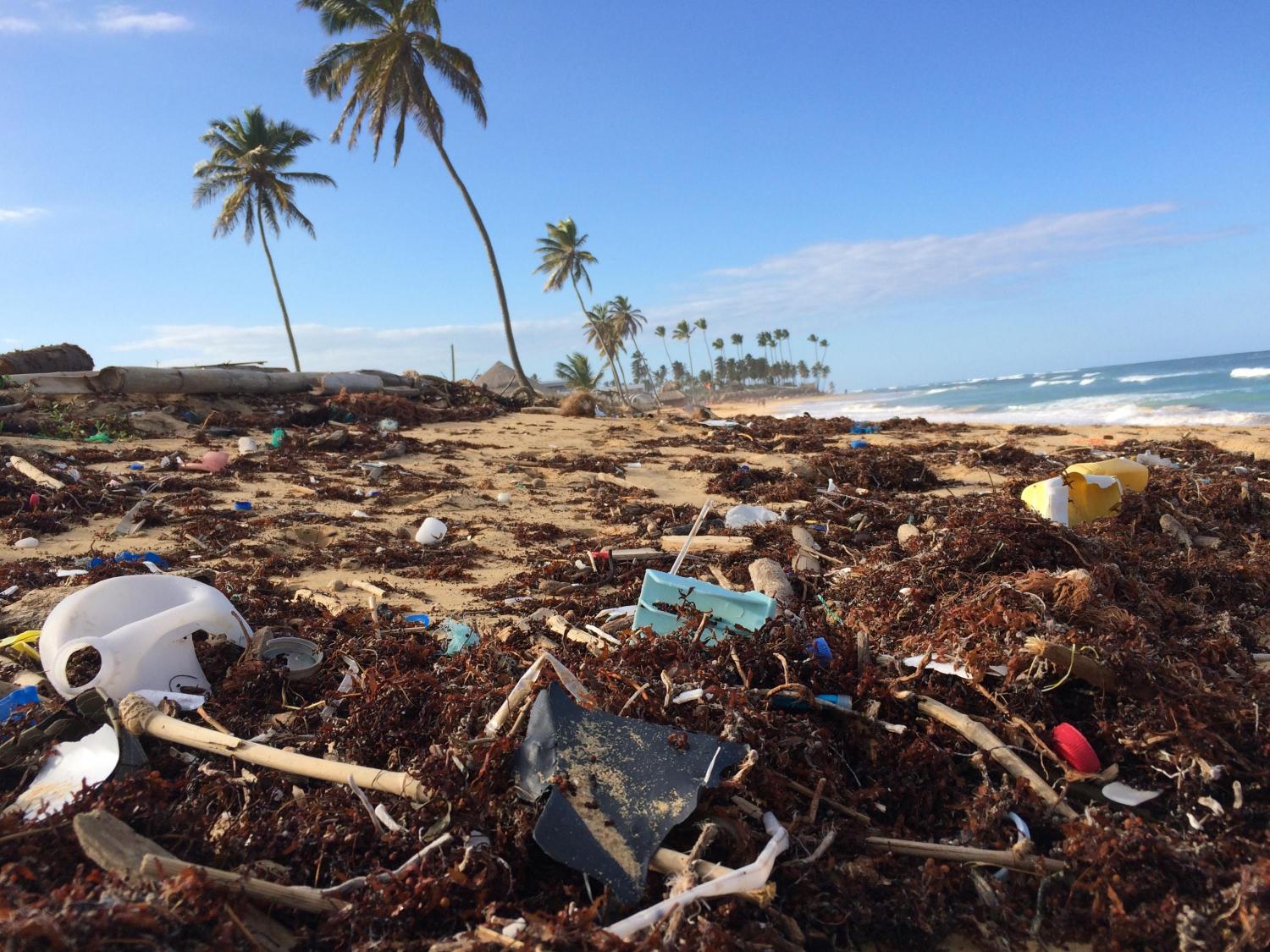
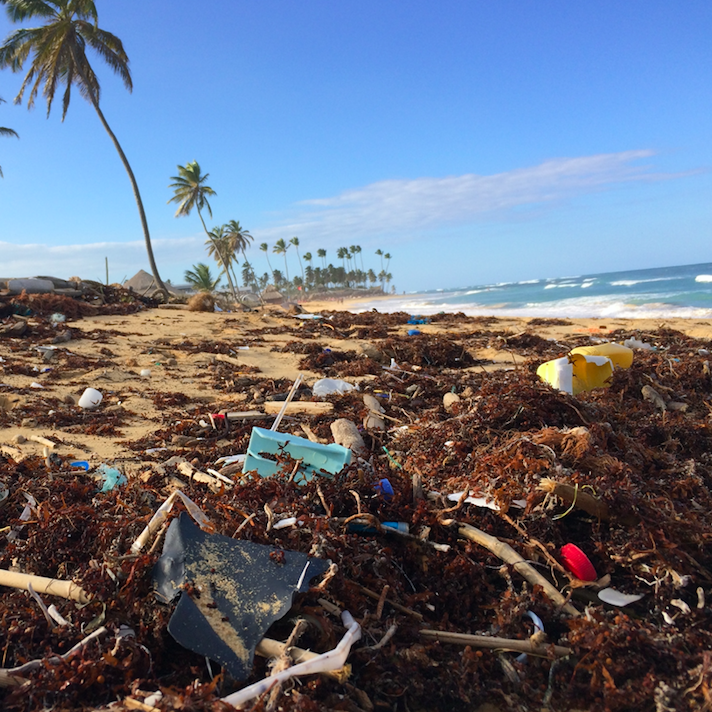
Could micropayments, new technologies, and, perhaps, the blockchain be tools in helping solve the plastic pollution crisis in Southeast Asia? Several organizations are looking at how innovation can help create more incentives for cleaning up plastic waste from ending up in our oceans and involve citizens in more effective waste management systems.
One prototype for this took place in Manila Bay, Philippines, which was, until recently, choked of plastic pollution. Bounties Network was able to collect three tons of plastic using a system that paid locals in an Ethereum-based cryptocurrency. Meanwhile, Plastic Bank, a new blockchain company, opened its first permanent location, a collection point where residents can trade plastic and other recyclable materials for digital payouts.
Both projects aim to develop solutions to address the global plastic pollution crisis. The focus on the Philippines is no accident, as developing countries, particularly Asian countries, are at the heart of the problem. There, growing middle classes and increasing demand for consumer products, including those of global brands such as Coca-Cola, PepsiCo, Unilever and Nestle, has skyrocketed over the past decades. All of those companies use plastic packaging, but few invested in systems to recapture the plastic they sold. The result is plastic waste discarded into the natural environment, and, eventually, the ocean. As much as eight million metric tons a year end up in the globe’s oceans and have created a problem we can no longer ignore.
“As plastic pollution continues to wreak havoc on the natural world and impact communities, wildlife, and people, we can’t wait to address the damage that has already been done. This crisis can be solved, but we need to start at the root and fix what is a fundamentally broken system,” said Nik Sekhran, Chief Conservation Officer at World Wildlife Fund-US in a press statement.
There’s good news on this front, as countries, businesses, and civil society actors have all started to take concrete steps to reduce plastic pollution. One country leading is Indonesia, which is the second largest source of oceanic plastic waste behind China according to a report from Ocean Conservancy. The archipelago nation of 260 million has a plan to reduce marine waste by 70 percent and increase recycling 300 percent by 2025. This is backed by a commitment to invest $1 billion a year to improve waste management infrastructure.
Key to this will be scaling up waste collection and teaching Indonesians to sort trash properly. To aid with this are what Indonesians call “trash banks“ (Bank Sampai) which play a similar role to Plastic Bank in the Philippines. Residents can bring in organic and non-organic waste to be sorted, and have that amount deposited into a special bank account. There are over 2,000 trash banks in operation across Indonesia, and there are plans to expand the system significantly over the coming years.
“In Indonesia, public participation in trash management is low,” said Putra Fajar Alam, the director of Solusi Hijau Indonesia, which provides technology support to these trash banks. “But when we taught them there are trash banks where you could bring your daily trash and it could be converted into money, and you can make that deposit as a savings, they are very interested.”
Cleaning up and collecting plastic is just one part of the solution. Indonesia, the Philippines, and other countries generating more plastic waste need to expand infrastructure to be able to recycle collected plastic, which will be a major challenge. Even many western countries have not done this – we choose to send waste abroad, often to Asia, as its cheaper to ship waste to that region than deal with it at home. That is changing, though, as recently some countries have begun returning this unwanted waste, including China, Indonesia and the Philippines.
Ultimately, we need to move beyond recycling toward a circular economy model. Solving the plastic crisis will take more than just creating incentives to clean up beaches. It will require systematic change, from consumers, businesses, and governments, to shift the entire global system from one dependent on single-use plastic, to one where reusability and recyclability are central.
Image credit: Dustan Woodhouse/Unsplash
Tupperware: A Legacy Brand Embracing a Sustainable Future


As overflowing landfills and waste-ridden seas dominate the headlines, advocates continue to call on companies to embrace a circular economy, in which materials are infinitely reused and nothing becomes waste. Tupperware Brands is among those answering the call. Earlier this month, the direct sales company rolled out a vision to leverage its people and products to push the circular economy forward—which it fittingly dubbed No Time To Waste.
For Tupperware, which was founded in the 1940s with a lineup of reusable food storage containers, the move is something of a return to its roots. "One could say we practiced sustainability before it was even called that," said Mark Shamley, VP of social impact for Tupperware. "Our plan is about how to leverage our history and modernize that approach for where we are today."
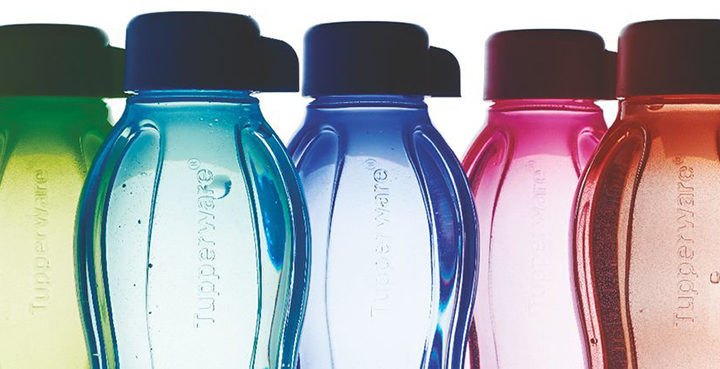
Circular products built to last
Sustainable product design is central to Tupperware's vision. Case in point: This summer Tupperware will become one of the first four companies to utilize a new raw material made from mixed plastic waste. The so-called "certified circular polymer" will appear in a line of Tupperware products meant to replace single-use items—including a reusable straw, coffee cup and beverage tumbler.
"This is a global launch for the company that allows us to make a pretty bold statement around reusability and renewable materials," Shamley said. "It supports claims about the circular economy and, at the same time, provides alternatives to well known single-use items that are found in waterways and oceans."
As we report often here on 3p, consumer preferences are changing rapidly—particularly among young people. The majority of Americans now cite healthfulness and sustainability as primary purchasing drivers, surpassing even convenience. Put another way: People are growing tired of our make, take and dispose culture—and they're in the market for better products.
When it comes to plastic, in many ways the science is still catching up. But the ability to recycle mixed plastic into new food-grade products is a significant development, Shamley said. "When I first came here, this wasn't an option," he told us. "But this innovation emerged, and we saw a tremendous opportunity to move forward."
Tupperware is looking to integrate additional circular materials as they become available. "We’re keeping an eye on it," Shamley said. "And we will work with our partners and providers who are looking to be on the cutting edge."

Starting a conversation
Tupperware's operational changes under No Time To Waste are numerous: It committed to eliminate waste sent to landfill by 2025 and pioneer new technologies that will allow 90 percent of returned products to be reused or recycled at the end of their useful lives. Additionally, with its network of millions of salespeople and customers worldwide, Tupperware's leadership feels the company can help hasten the shift toward more sustainable choices.
"One of the big things for us is: How do we drive consumer behaviors?" Shamley explained. "We have 3 million sales representatives all over the world. Each and every day, week after week, they're reaching consumers—and they can share insights and tips to help those consumers embrace this notion of wasting less."
As part of No Time To Waste, Tupperware is calling on customers to take a low-waste pledge and reaching out with lifestyle tips to help them "waste less and live more." As Dune Ives, executive director of the nonprofit Lonely Whale recently told us: “We're all starting to be willing to have a conversation around our behavior and our everyday choices.” Still, at a time when global consumers use a million plastic bottles every minute, there's a lot more work to do.
"We're putting a flag in the ground as a company operationally—knowing that, like many other companies, we have to take care of the things we need to do in-house. But we also feel like we can drive the behavior of consumers," Shamley told us. "We're super excited about the utilization of our network."
The bottom line
As the Brands Taking Stands movement heats up, more companies are using their clout to further causes beyond profit. In many ways, this lays down the gauntlet for the storied companies of yesteryear. But for its part, Tupperware seems keen to tackle the challenge head-on.
"The No Time To Waste platform is our first big, bold step into this space," Shamley told us. "We have a rich history—Tupperware often invokes a very positive, nostalgic feeling with most consumers—but we feel this is the right place for us in terms of advancing our message. It will become the central platform in terms of how we approach engaging our 3 million salesforce representatives, our distributors and our businesses all around the world."
Catch Mark Shamley on the main stage at the 2019 3BL Forum: Brands Taking Stands—What’s Next, where he will emcee a high-octane conversation about the future of sustainability in business. Join us on October 29 and 30 at the MGM National Harbor just outside Washington, D.C.
Images courtesy of Tupperware